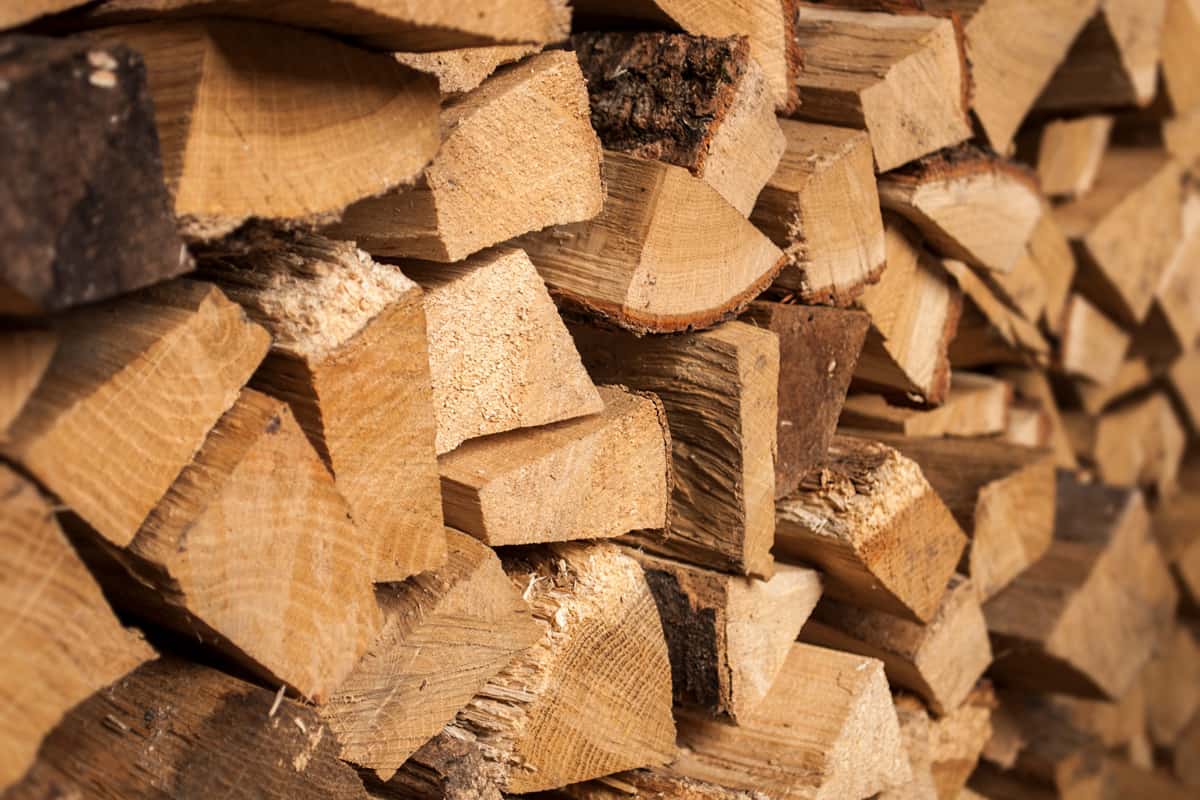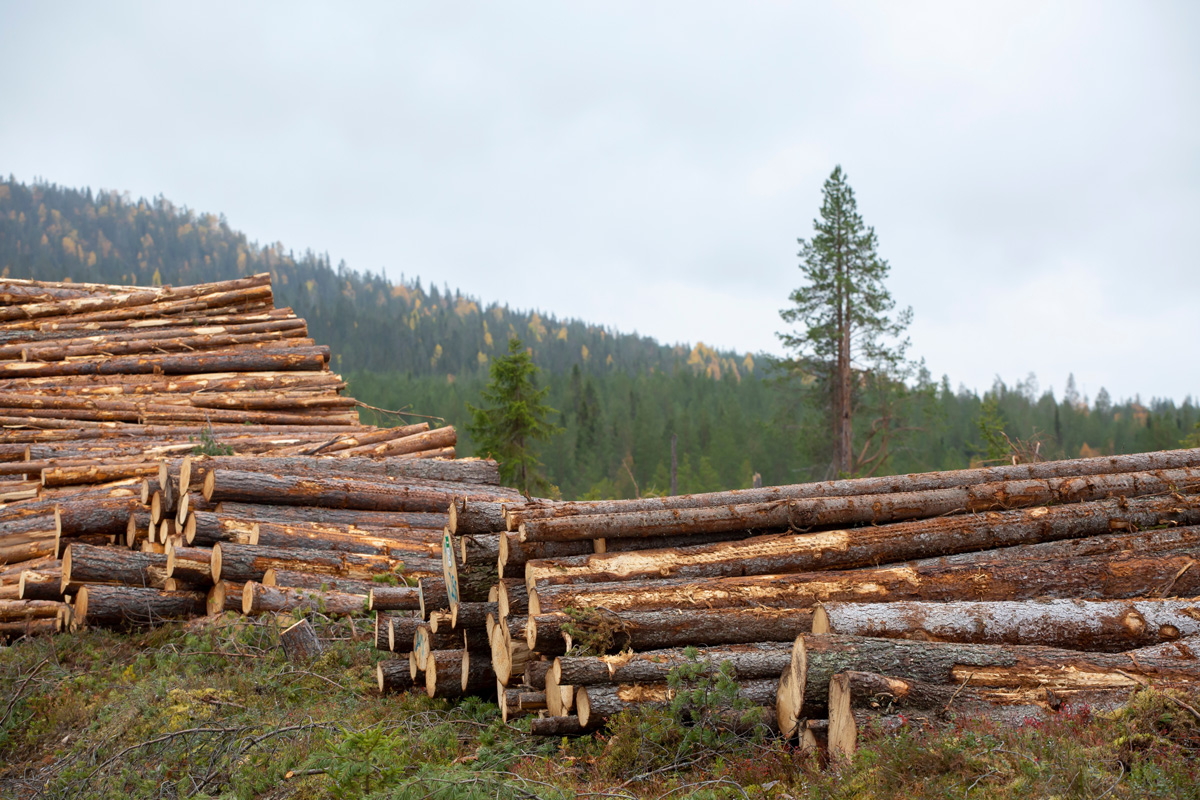Using the trees in your landscape for more than aesthetics is a great way to enjoy them. For example, do you want to cut branches for firewood from your conifer tree and have no idea how long to season it? What is the best way to season conifer wood? What does seasoning do?
Luckily, we've done plenty of research and have these answers below!
You generally want to season conifer wood for six to 12 months. When you see the term season, it means letting your conifer wood dry out. During those 6-12 months, you want your wood's moisture to dry down to at least 20-25%.
If your wood is too fresh, it won't likely burn and will be wasted in your next fire.
As we start this article, we will cover all things seasoning conifer wood and discuss how long you should do this. Whether you want to harvest some branches from your tree or the entire thing, we're here to offer some guidance. With that said, let's dive right into this topic!
How Long Does It Take To Season Conifer Wood?

Most times, you want to season conifer wood for about a year. However, some people have luck after six or so months if the weather is especially warm and dry, so this varies.
However, as your conifer seasons, the water content inside the wood evaporates/dries out. Since you season wood to use it for fires, it needs to be as dry as possible to be usable.
Even if your tree's lumber feels dry on the outside, there's a chance there is still a bit of moisture on the inside if you recently chopped it down.
Many people don't realize your conifer will store water in its leaves and branches in tiny tubes. That can mean they retain moisture even after removing them from your conifer tree.
Hence why, seasoning can take nearly 12 months in some situations. Again, it's always better to take your time and dry your wood rather than rush the natural process.
What Does It Mean To Season Wood?

When you season wood, this is the process of letting any moisture inside evaporate. Seasoning conifer wood typically takes time because these evergreen trees retain water well.
You want to think of this as prepping your wood for fire making. For example, if you cut off a few branches from your conifer for seasoning: you can't use them to make a fire right away.
Although your tree's branches may feel dry, there is almost always a bit of water trapped inside. Therefore, allowing your lumber to "season" over 6-12 months is necessary.
According to Direct Stoves, allowing your wood to lose as much moisture as possible before using it as firewood is beneficial for many reasons.
One is the fact it will burn easier, making the entire process more efficient. Secondly, dry firewood will produce less dirt and minimal damage to the environment and air around you, which is always a plus.
So, even though you're ready to start a fire, that doesn't mean your wood is.
How Do You Season Conifer Wood?

Now that you know how long your conifer wood should season, what about doing it? Generally, seasoning wood doesn't take much effort and shouldn't be challenging for one person.
Experts recommend cutting the wood from a conifer to around 250mm or ten inches, splitting it to size, and stacked. Keeping your wood less dense will speed up the seasoning process, so we recommend this.
In addition, you want to completely cover the wood so rain and other moisture from the air can't reach it. Remember, the wetter the climate around wood, the longer it takes to season.
With that said, you want to leave some ventilation for your lumber. Ideally, cover the top and bottom of your pile, leaving some of the sides exposed.
This allows the water in your conifer wood to escape into the atmosphere as it evaporates. Moreover, professionals suggest leaving wood out to season for a year or more at least.
On top of that, try and get the moisture levels in your conifer wood to around 20-25% for best burning.
What Happens If I Don't Season My Conifer Wood?
If you choose not to season your conifer wood, expect a lower-quality burn. As we said before, burning unseasoned wood can lead to more smoke and a dirtier fire than usual.
The drier your lumber, the better and easier it will burn and make a fire. According to experts, unseasoned wood causes your fire to produce a large amount of smoke, making it hard to breathe.
Especially for people with lung problems already, burning unseasoned wood can become rather dangerous. Therefore, you want to season wood before using it in a fire.
In addition, the excess smoke from an unseasoned fire will dirty your chimney. The residue left over from the wood can even cause a dangerous creosote build-up. So this is a serious matter.
If your fireplace has a glass front, you may also notice burning unseasoned wood results in blackening. Like the inside of your chimney, the front can also be difficult to clean and repair.
So, unless you want a heavy-duty cleanup on your hands, try and wait to use your conifer wood.
How Do You Speed Up Wood Seasoning?

Suppose you want to season your conifer wood but don't have 12+ months. Luckily, there are some ways to speed up the drying or "seasoning" process.
Our first tip is to place your wood in the full sun while it dries. Doing this ensures the moisture evaporates faster than in the shade, preventing more water from touching your timber.
As we said, it is good to cover the top of your wood as it seasons, just in case it rains. However, if the weather looks nice for the next few days or even weeks, you can certainly try leaving the wood uncovered in the full sun.
On top of that, you also want to ensure you cut and stack your wood correctly. We recommend keeping it around ten inches, as this seems to be the sweet spot for seasoning.
If wood is super dense, the chances of a quick dry time become very slim. Like anything else, thicker materials will take much longer to dry than thinner ones.
Can You Leave Conifer Wood Out To Season In The Winter?
As long as your conifer wood is covered on the top, it should still dry during the winter. Generally, the cooler weather and seasonal winds that come during that time can benefit seasoning wood.
With that said, you want to keep wood off the ground as it seasons. Even if you stack it on a table or other lifted surface, that will help prevent moisture from rain or snow from making its way onto your firewood.
You also want to remember that wood will dry slower in winter. So, if you want things to happen quickly, keeping conifer wood outdoors through the colder months may not be your best bet.
Instead, you may want to wait to cut down your wood until spring so it experiences warm weather before getting too cold.
Again, if you wait the full 12 months, it's inevitable your conifer wood will experience winter, so in that case, let it enjoy the weather! Furthermore, you can even cover your wood in a tarp if snow is in the forecast, so there are many ideas here.
GUARD SHIELD Blue Tarp
This tarp is weatherproof, made of Polyethylene (PE), features sealed seams, measures 16x20 feet, and is seven mils thick.
Check out this tarp on Amazon here.
Is Conifer Wood Good For Making Fires?
Overall, you should have success seasoning and burning conifer wood. Generally, conifer trees take longer to dry as they retain water very well, which can be bothersome to impatient fire starters.
However, once your wood is dry and you use it for making a fire, it should burn nicely and doesn't usually spit like some other woods. However, according to Hyndburn Borough Council, conifer wood is best mixed with hardwood for fires.
Since hardwoods burn a bit longer and help create larger fires, throwing them in with conifer can be a good idea. A common misconception about conifers is that they're hardwood trees, which is not true.

Specifically, cone-bearing plants typically fall into the softwood category. So, if you want to make a stronger fire with conifer, it could be helpful also to throw in some hardwood.
That may also be an excuse to season hardwood alongside conifer for 6-12 months, so nobody's stopping you from doing this with a few different wood types.
Additionally, ash wood (one of the best for fires), birch, beech, oak, and elm can all be great additives to a conifer wood fire, so you have plenty of choices. Don't be afraid to mix various kinds together!
To Wrap It All Up
Whether you have a few conifer trees in your garden or want to plant them, you can always use their wood for building fires. However, we found that you usually season your conifer wood for six to 12+ months to be usable in a fire.
In general, wood holds moisture while it's alive, leading it to need "seasoning" or dry time. Conifers can be especially moist once you chop off their branches, so the longer you season them, the better.
On top of that, you want to cover the top of your future firewood as it seasons. We recommend a tarp so the wood doesn't get wet if it rains or snows. Good luck, and enjoy your firewood!
While we have your attention, check out these helpful related garden articles below:
How To Shape A Conifer Tree Into A Spiral [Step-By-Step Guide]
Is Bone Meal Or Wood Ash Good For Conifers? [& What To Use Instead]

